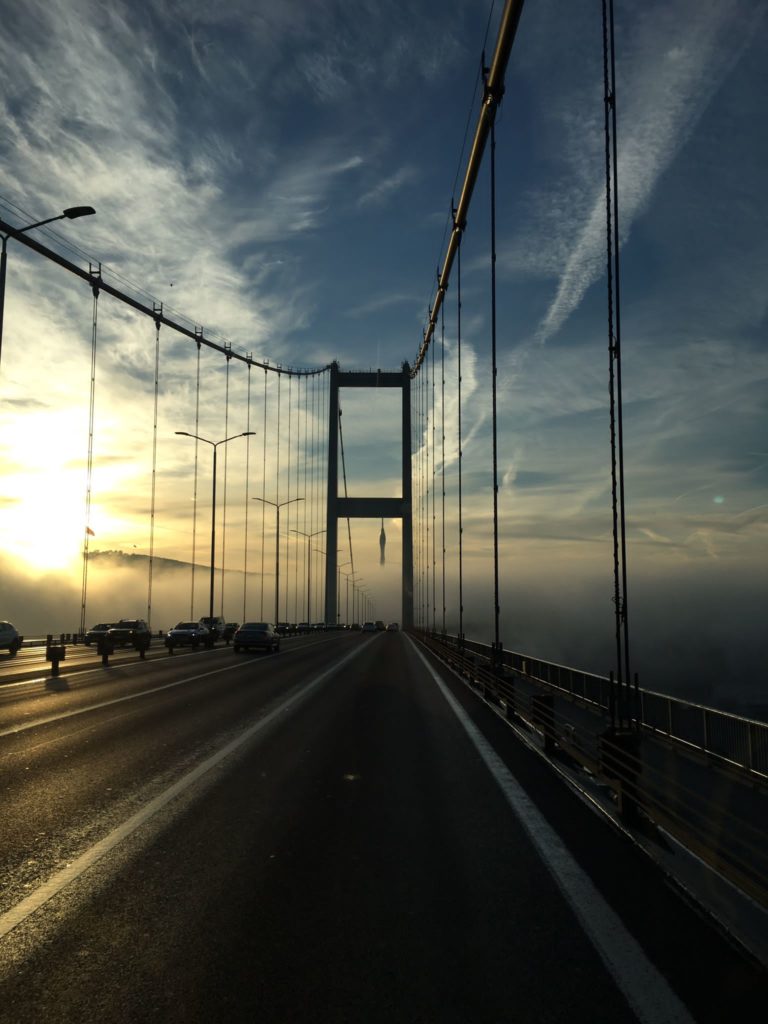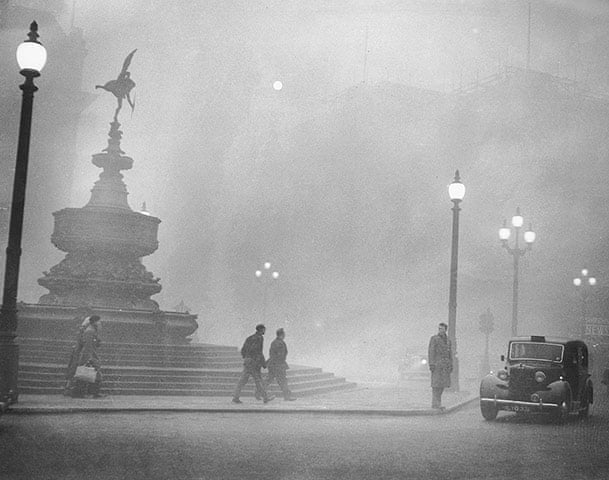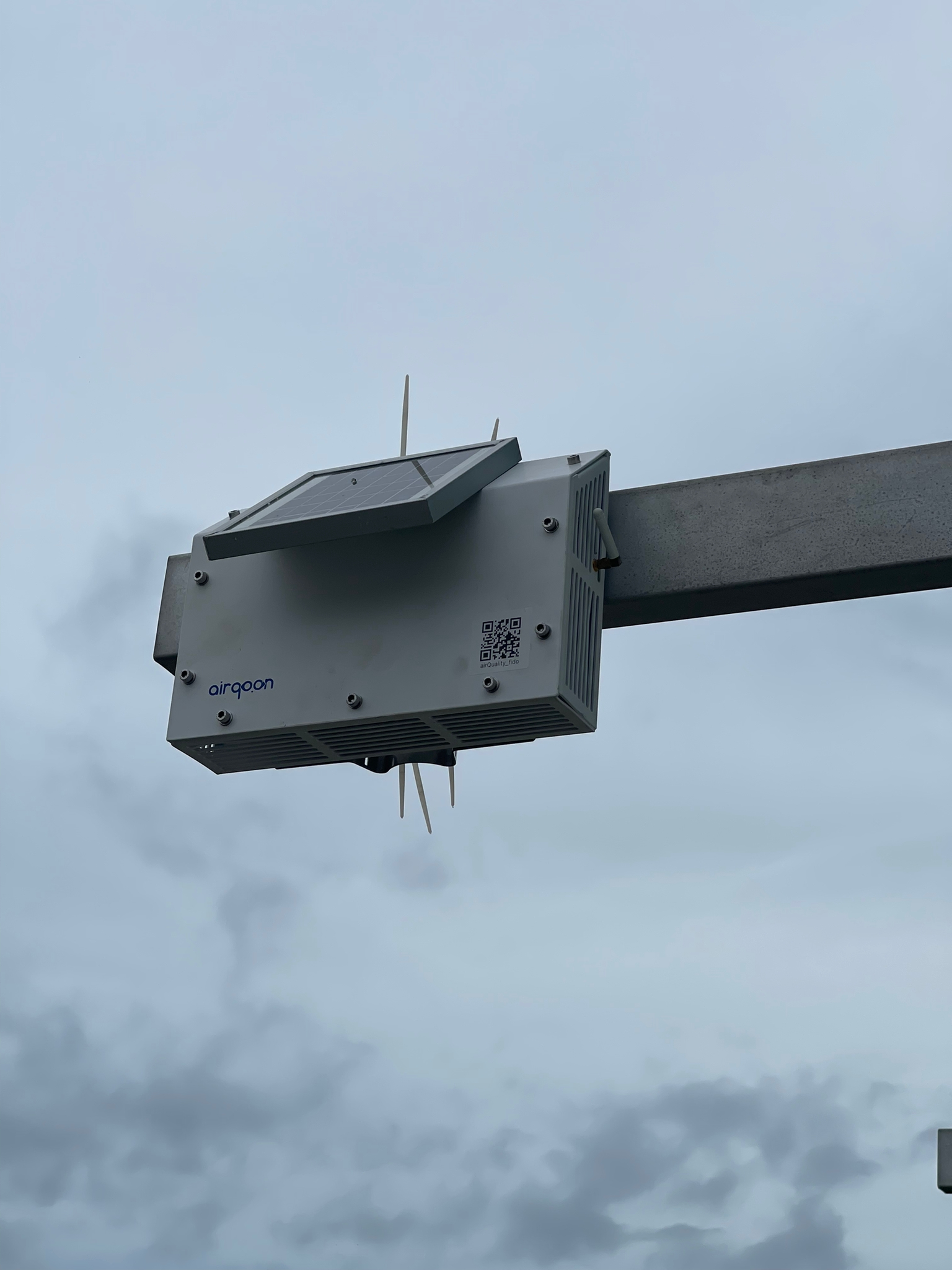Air pollution in Istanbul is becoming more and more dangerous day by day. Smog was influential in the city on 4–8 November, an essential indicator of this pollution. The weather event perceived as fog in those days was smog, which most of the public did not know. Smog, a mixture of fog and smoke (Polivka, 2018), occurs due to temperature inversion in areas where the source of pollutants is concentrated (Sungur & Gönençgil, 1997).

The temperature decreases between 0.5 and 1.0 °C per 100 m as it rises from the ground under normal atmospheric conditions (URL 1). If the air that needs to be cooled as it rises in the atmosphere gets warmer from time to time, this event is called temperature inversion. This meteorological event, which occurs mainly in the winter months, also causes an increase in air pollution. In the air layer where heat inversion occurs, a strong collapse movement happens in proportion to the severity of the inversion(Sungur & Gönençgil, 1997). In these periods, when the wind speed is also low, the air cannot move vertically and horizontally, and pollution becomes continuous. Since the air cannot move vertically, the emissions of fossil fuels used in heating, transportation, and industry are kept in the lowest layers of the atmosphere, and all pollutants begin to take place within the breathing distance of people (Burdur & Sarı, 2018). In such cases, it is recommended not to go out as much as possible.
Air pollution is harmful to human health and ecosystems. Several sources of air pollution are anthropogenic and natural (URL 2). Temperature inversion, one of these sources of pollution, causes more pollution in densely populated cities such as Istanbul with the pressure of urbanization. Paying attention to the smoke and taking the necessary precautions as soon as possible is very important for human and environmental health. There are many examples of Smog, which has caused deaths in the past years.
The deaths that occurred in the regions where Smog was influential in the past years effectively revealed the seriousness of the problem and made legal arrangements. In the smog that occurred on December 1–5, 1930, in the Meuse Valley of Belgium, one of the most heavily industrialized regions of the European continent, hundreds of people in the surrounding villages began to experience respiratory severe tract signs and symptoms, and 60 people died (Nemery, Hoet, & Nemmar, 2001). It is known that in the smog, which was effective in Donora, a small industrial town of the USA, on October 26, 1948, an estimated 5000 to 7000 people fell ill in a city with a population of 14000. About 400 were hospitalized, and 20 people died (Helfand, Lazarus, & Theerman, 2001).

The most well-known example of smog; The Greater London Smog, which took place in London, England, in 1952 and is estimated to have killed between 4,000 and 12,000 people (Polivka, 2018). Traffic stopped in London, where visibility was less than half a meter, and trains, theaters, and cinemas were closed. It is known that the coffins of the undertakers were exhausted (URL 3). This event, in which life in London came to a standstill, is a significant turning point in explaining the seriousness of air pollution. In the 1st Season 4th Episode of The Crown, this event was treated as a natural disaster.
A recent study on the Smog incident in London found a link between pollution and asthma. University of California-San Diego economist Prashant Bharadwaj, the study’s lead author, said in a statement that they studied children of many different ages. He stated that they found the most significant effect in terms of exposure to smog in children younger than one-year-old and even in utero. The study also revealed that the youngest Londoners are five times more likely to have asthma (URL 4).
When we look at the air quality of Istanbul on November 4–8, it has been determined that it has reached unhealthy levels in many regions. Smog causes particulate matter (PM10) to be trapped in the air; thus, the pollution is felt more and more effectively (Burdur & Sarı, 2018). The PM10 value at short-term exposure is primarily associated with worsening respiratory diseases, including asthma and COPD, and many other adverse health effects (WHO, 2021); It was measured at 779 µg/m³ in Silivri on 6 November at 19:00 and 335 µg/m³ in Beşiktaş on 5 November at 13:00 (URL 5, 6). These values are at the level where air pollution is the most dangerous for all groups.

The air quality measurement stations of the Ministry of Environment, Urbanization and Climate Change, Istanbul Metropolitan Municipality, and Airqoon(URL 5, 6) examined the air quality of 53 regions on these dates. While the PM10 24-hour average limit value is exceeded in 31 of 53 areas, the PM10 value is 2 times higher than the average limit value in 17 of these regions. Regions with the most increased air pollution; Kağıthane, Alibeyköy, Ümraniye, Beşiktaş, and Sarıyer. The areas with the least air pollution are; It has been determined that Avcılar, Büyükada, Kumköy, Kadıköy, and Şile.

Most temperature inversion events in cities occur at night and early morning hours (Sungur & Gönençgil, 1997). In line with the data examined, it has been observed that air pollution is effective in the city in the morning and at night. Air pollution has reached a more detectable level due to increased fuel consumption and not taking the necessary precautions.

Istanbul is a mega city with population density, industrial development, and development of transportation infrastructure. Istanbul’s air pollution affects the densely populated city and the surrounding provinces. The smog in the city shows how significant air pollution has reached. While more smog events were observed in industrial areas where fossil fuel use was intense in the past, the frequent occurrence in Istanbul clearly showed that necessary precautions were not taken regarding air pollution. The WHO said exposure to air pollution causes 7 million premature deaths yearly (WHO, 2021). Air pollution is one of the most dangerous environmental pollutions for human health, which many people are unaware of. Local and relevant private institutions should come together and work to create this awareness, and air pollution should be brought under control.
The effects of the smog on many parts of Istanbul on human health are expected to manifest themselves in the long run. In the statement made by the Clean Air Platform, it is estimated that there may be an increase in Covid-19 cases due to the smog effect (URL 7). Particular attention should be paid to respiratory disorders of individuals with respiratory and heart disease, the elderly, and children. The decision to reduce the use of coal and use clean, renewable energy sources at COP26 shows the necessity of switching to renewable energy types instead of fossil fuels as soon as possible due to the increasing air pollution in Istanbul.
References
Burdur, A. D., & Sarı, S. (2018). Effect of Temperature Inversion on Air Pollution (Isparta City Center Example). Electronic Turkish Studies, 13(2).
Helfand, W. H., Lazarus, J., & Theerman, P. (2001). Donora, Pennsylvania: an environmental disaster of the 20th century. American journal of public health, 91(4), 553.
Nemery, B., Hoet, P. H., & Nemmar, A. (2001). The Meuse Valley fog of 1930: an air pollution disaster. The lancet, 357(9257), 704–708.
Polivka, B. J. (2018). The Great London Smog of 1952. AJN The American Journal of Nursing, 118(4), 57–61.
Sungur, K. A., & Gönençgil, B. (1997). Effects of Various Climate Elements on Air Pollution. Ankara Üni. Türkiye Coğrafyası Araştırma ve Uygulama Merkezi Dergisi, Sayı:6, 337–345.
World Health Organization. (2021). WHO Global Air Quality Guides Press Release.
URL 1: https://www.mgm.gov.tr/site/yardim1.aspx?=Enverziyon General Directorate of Meteorology, Inversion Estimation for Urban Air Pollution Risk. 12 November 2021.
URL 2: https://www.eea.europa.eu/tr/themes/air/intro The European Environment Agency, Air Pollution. 12 November 2021.
URL 3: https://www.theguardian.com/environment/gallery/2012/dec/05/60-years-great-smog-london-in-pictures The Guardian, 60 Years Since The Great Smog of London — in Pictures. 11 November 2021.
URL 4: https://www.marketplace.org/2016/07/08/world/great-london-smog-1952/ Scott Tong, A Lifetime Later, A Smog Attack’s Full Cost is Seen. 17 November 2021.
URL 5: https://www.havaizleme.gov.tr/ Ministry of Environment, Urbanization and Climate Change, Continuous Monitoring Center. 11 Kasım 2021.
URL 6: https://www.airqoon.com/
URL 7: https://tr.euronews.com/2021/11/09/istanbul-u-kaplayan-sis-degil-hava-kirliligi-temiz-hava-hakk-platformu-uyar-yor Euronews, ‘İstanbul’u kaplayan sis değil, hava kirliliği’: Temiz Hava Hakkı Platformu uyarıyor. 12 November 2021.
Image taken from Zeynep Öyküm Bayraktar.









